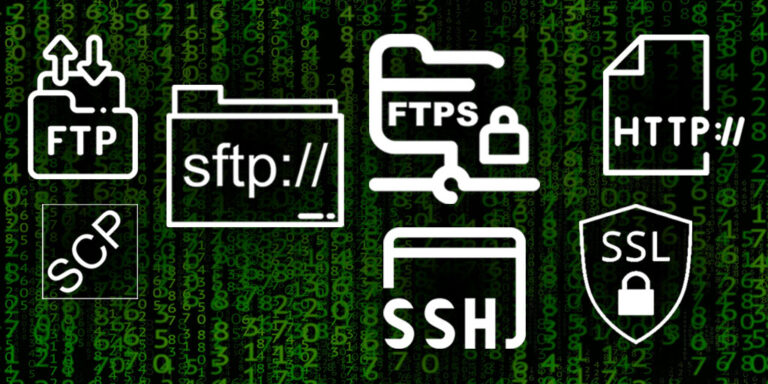A deeper exploration into the world of inter-computer communications will reveal more types of communications, their interfaces and the network protocols they use.
Table of contents
Introduction to network protocols
Deeper exploration into the world of inter-computer communications will reveal more and more types of communications (e.g. radio waves, Ethernet, Bluetooth, etc.), their interfaces and the network protocols they use.
From Techopedia, the term network protocols are defined as “formal standards and policies comprised of rules, procedures and formats that define communication between two or more devices over a network. Network protocols govern the end-to-end processes of timely, secure and managed data or network communication.”
The network that is referred to can either be a local area network (LAN) or the internet. Client or local devices are those requesting data and server or remote devices are those responding with data.
Understanding some common network protocols is written as short notes in an attempt to understand these protocols by comparing their similarities and differences.
- Get the Raspberry Pi 4B 4GB Starter Kit from Amazon.com
- Get the Raspberry Pi 4B 8GB Starter Kit from Amazon.com
- Get the TP-Link TL-SF1008D Fast Ethernet Network Switch from Amazon.com
- Get the TP-Link TL-SG108 Gigabit Ethernet Network Switch from Amazon.com
Common network protocols
The common network protocols are HTTP, HTTPS, FTP, SCP, SFTP, FTPS and SSH.
HTTP (Hypertext Transfer Protocol)
- Transferring files (text, graphic images, sound, video, and other multimedia files) on the World Wide Web
- Similar to HTTPS, but less secure
- Uses TCP/UDP port 80
- Used by web browsers (e.g. Chrome, Firefox, Edge, Internet Explorer), to display their content
HTTPS (Secure Hypertext Transfer Protocol)
- Similar to HTTP, but ensures a secure connection using SSL encryption technology
- Request and response data is secured using SSL certificates
- Uses TCP/UDP port 443
- Recommended as standard by Google search
FTP (File Transfer Protocol)
- Network protocol supporting file transfers and manipulation capabilities between a client and server on a network
- Uses TCP/UDP port 21
- Restricted to FTP directory on server
- FTP clients e.g. Eclipse IDE’s Remote System Explorer and Aptana Studio 3’s Remote Connection Manager
SCP (Secure Copy)
- Network protocol supporting file transfers (only) between hosts on a network.
- Part of SSH suite
- Uses TCP/UDP port 22
- E.g. WinSCP
- Can copy file(s) anywhere you have the privilege to
SFTP (Secure File Transfer Protocol)
- Similar to FTP, but ensures a secure connection
- Part of SSH suite – uses FTP with an SSH tunnel between client and server
- Similar to FTPS, but needs one port to transfer data
- Uses TCP/UDP port 22
- E.g. most FTP clients
- Recommended over FTPS
- FTP clients e.g. Eclipse IDE’s Remote System Explorer and Aptana Studio 3’s Remote Connection Manager
FTPS
- Similar to FTP, but ensures a secure connection
- SSL was applied to FTP to create FTPS
- Similar to SFTP, but needs multiple ports to transfer data
- FTP clients e.g. Aptana Studio 3’s Remote Connection Manager
SSH (Secure Socket Shell)
- Network protocol that provides a secure way to access a remote computer by using username/password authentication
- SSH also refers to the suite of utilities that implement the protocol
- Uses TCP/UDP port 22
- E.g. PuTTY & sshpass command
Other
These are not network protocols but are used with data transfers.
SSL (Secure Sockets Layer)
- Security technology that provides a secure way for computers to establish an encrypted link between them
- It is largely aimed at protecting the user’s privacy
- E.g. HTTPS and FTPS
- Used between web servers and web browsers
- A web server requires an SSL certificate in order to create a Private Key and a Public Key
- It is now called TLS
Notes on Raspbian (Linux)
- On older versions of Raspbian SSH is automatically activated
- SSH can be manually activated/deactivated using the raspi-config tool
Notes on OpenELEC / Kodi (Linux)
- On OpenELEC, SSH must be enabled manually for the SSH protocol to be used
Conclusion
Inter-computer communications (e.g. radio waves, Ethernet, Bluetooth, etc.) work with interfaces and network protocols. Network protocols are the formal standards and policies comprised of rules, procedures and formats that define communication between two or more devices over a network. Here we listed and summarized a couple of network protocols.

